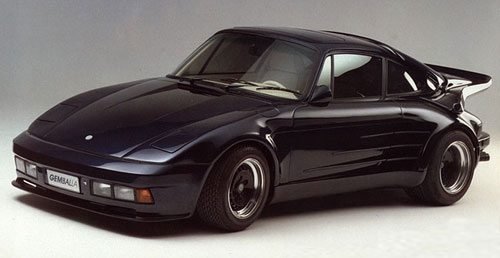
Arguably the biggest car news of the year, BMW last Friday unveiled their 6th-generation 3-series, the 2012 F30. Every previous generation has represented the template, the high-water mark for sports sedans during its reign, so expectations are somewhat lofty for the new arrival.
With the F30, there are dozens of new features and attributes to consider; tonight, though, let’s ignore the mechanical and electronic and focus on curb appeal, or the styling of the new bread-and-butter BMW.
The nose. Probably the most-discussed aspect of the new car’s design are the unprecedented “tear ducts” connecting the headlights with the trademark “kidney” grilles. This element seems to serve two purposes: It draws its inspiration from recent BMW concept cars like their i8 EV, so is forward-looking in that respect, and it also hints at more classic BMW fascia styling, e.g. the ’80s E30, whose kidneys and headlights were embedded in a large rectangular grille. More questionably, it seems to inject a dose of “squinting” anthropomorphism into what was one of the most refreshingly non-human automotive visages in the business. At least the car doesn’t look happy. Goodness knows how that would have gone down.

The rear. Easily the most conservative angle of the car. An amalgam of the previous generation’s refreshed rump and BMW’s new F10 5-series, there’s absolutely nothing groundbreaking about the taillight area. We get a slightly higher trunk line than on the outgoing model, putting a bit more wedge into the profile, and the lights are arranged in BMW’s classic L-shape, nicely framing the car’s athletic tush. Considering recent BMW trunk disasters like the E63 and E65 “Bangle-butts” and the pre-refresh E90’s “clenched” rear end, I think we should all breathe a sigh of relief over the F30’s treatment.

The proportions and other details. My favorite styling attribute to discuss, and an area where BMW has traditionally excelled, the proportions are the car’s most successful design quality. In profile, where the distribution of visual masses is most easily distinguished, there are a couple of noteworthy changes from the previous-generation 3-series. First, the front overhang is more pronounced. The preceding three iterations of BMW’s 3-series—the E36, E46 and E90—featured front wheels that were pushed as far forward as possible, the front overhang becoming little more than a glorified fender holding the lights and grille. This benefited agility by lowering the polar moment of inertia around the car’s center of gravity, but it made for somewhat awkward wheel arch placement in profile. With the F30, the relationship between various areas of sheetmetal on the side of the car is normalized, creating a very harmonious effect.
The second significant deviation from its predecessor’s design resides in the angle of the nose. Pleasingly, it’s more upright, following its bigger brother the F13 6-series by moving in the direction of another classic BMW styling trademark, the sharknose. It’s an aggressive, distinctive nose treatment that subtly highlights the car’s RWD bias by suggesting that the styling doesn’t have to be stretched tight over an engine hanging out in front of the axle line. It gives the overall aspect of the profile a ready, forward lean—the car is set to lunge ahead, to attack the turns. Well done indeed.

The interior. As with the rear end, the interior is nothing more than an evolutionary update of the previous generation’s. The trademark driver-angled, wide center console is present, as are the quad of analog gauges in the cluster. As conservative as it all is, the steering wheel of the M-Sport trim package (shown above) deserves special mention for looking especially bionic, attractive and, well, grasp-able. I feel like I need to sheath my hands in some sort of Tron-like exoskeletal gloves before I wrap my fingers around it. Very cool.
From a design standpoint, then, BMW did exactly what they needed to do to move the car forward, and nothing they didn’t. The F30 is a remarkably well-executed effort. Styling-wise, the BMW 3-series is dead, long live the BMW 3-series.

















